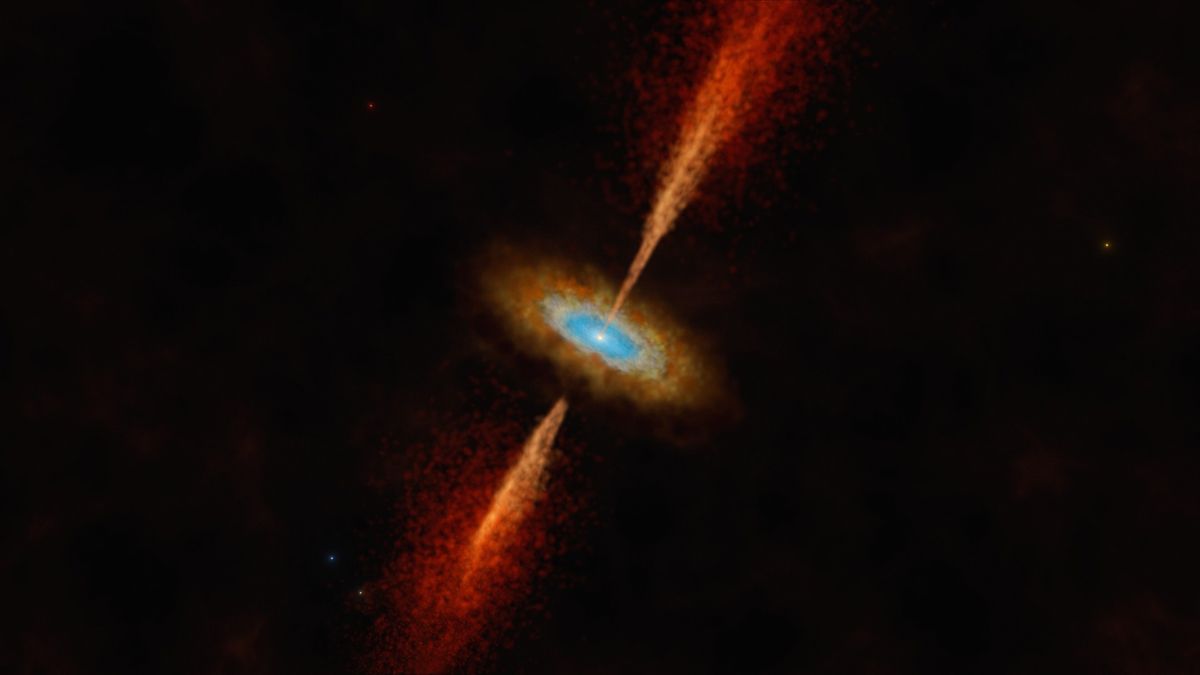Astronomers make groundbreaking discovery in another galaxy
Astronomers have made an extraordinary revelation of a swirling disk of material that feeds a young star in a galaxy outside the Milky Way, marking the first known example of such a phenomenon. The disk strongly resembles those found around infant stars in the Milky Way, indicating that stars and planets likely form in other galaxies much like they do in our own. This discovery was made in the Large Magellanic Cloud, a neighboring galaxy to the Milky Way situated 160,000 light-years away from our home.
The discovery was brought to light by researchers using the Atacama Large Millimeter/submillimeter Array (ALMA), which comprises 66 antennas based in Northern Chile and forms a single radio telescope. The young star is part of the HH 1177 system nestled within a massive cloud of gas.
According to Anna McLeod, lead author and scientist at Durham University, the sighting of a rotating structure in ALMA data was an unforgettable moment. These lively findings offer direct and compelling evidence that discs play a fundamental role in star and planet formation. “We know discs are vital to forming stars and planets in our galaxy, and here, for the first time, we’re seeing direct evidence for this in another galaxy,” McLeod said.
What led the astrophysicists to the system in question was the emergence of a jet from a forming star detected by the Multi Unit Spectroscopic Explorer (MUSE) instrument on the European Southern Observatory’s Very Large Telescope (VLT). This instrument enables the observation of the visible wavelength range while also measuring the wavelengths of light coming from an object, providing crucial hints about the types of matter present within the system.
The confirmation of an accretion disk surrounding HH 1177 required the measurement of dense gas movements around the star. This was accomplished using observations from the MUSE on the VLT and the ALMA. Accretion disks, like the one recently observed, form when matter swirls down onto an infant star and its central object. This matter forms a flattened, spinning disk due to the material’s carry of angular momentum, slowly feeding it to the central object. The variation in velocity due to the spinning motion of the accretion disk is evidence to astronomers of its presence.
Astronomers previously spotted bright accretion disks around supermassive black holes in other galaxies due to violent conditions that illuminate gas and dust in such disks. These provide a distinct glow and are tough to spot, even within the Milky Way. However, the conditions in the Large Magellanic Cloud give scientists an advantage, letting them witness the early stages of planet formation, which is what is believed to be taking place on HH 1177. The solar system experienced a similar process 4.5 billion years ago in its formation.
“This is an exciting time due to the rapid technological advancement when it comes to astronomical facilities,” McLeod stated. The team’s findings are published in the journal Nature.


